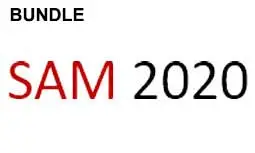Sample complexity trade-offs for synthetic aperture based high-resolution estimation and detection
Heng Qiao, Pulak Sarangi, Yazeed Alnumay, Piya Pal
-
Members: FreeSPS
IEEE Members: $11.00
Non-members: $15.00Length: 16:14
10 Jun 2020
This paper critically examines the potential performance benefits offered by motion of sparse arrays for direction-of-arrival (DOA) estimation. The motivation behind utilizing array motion is to increase the number of consecutive difference lags. However, creating a synthetic array also requires more temporal measurements compared to the static (non-synthetic) array. For the first time, we rigorously analyze the trade-off between the required number of temporal samples and the length of the difference co-array to understand when synthetic arrays offer distinct advantages. As a concrete result, we show that if the ratio of the number of consecutive lags of the difference coarray of sparse arrays with and without motion is above a universal threshold, the synthetic array outperforms its non-synthetic counterpart and has a smaller estimation error. Our claims are demonstrated both theoretically and through numerical experiments.



